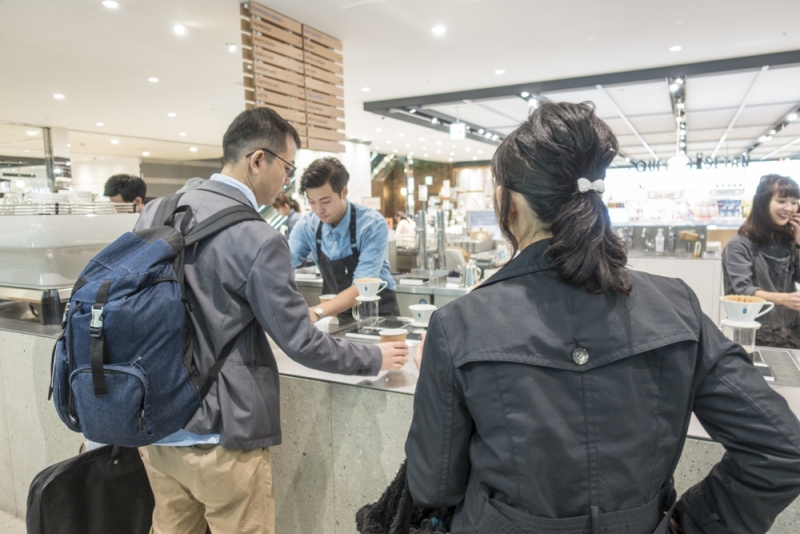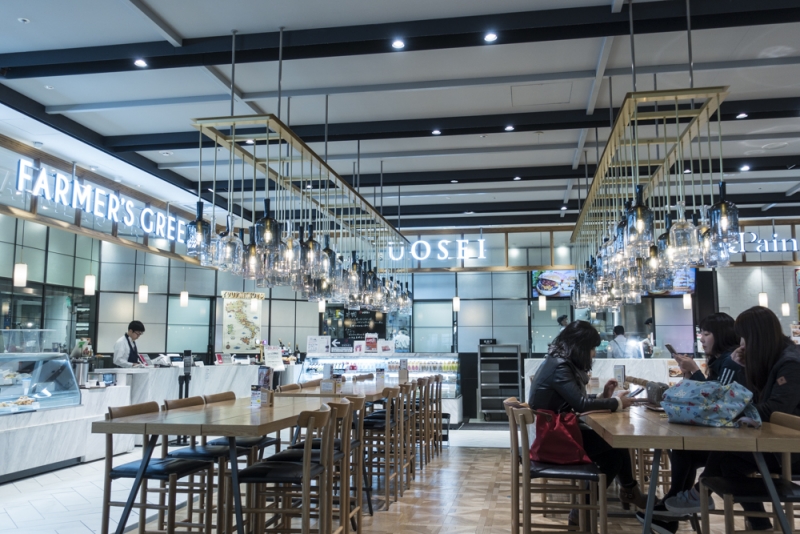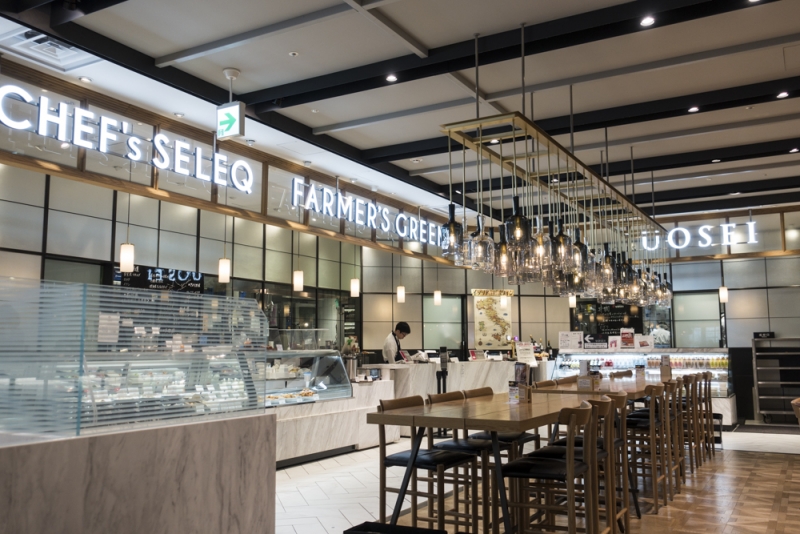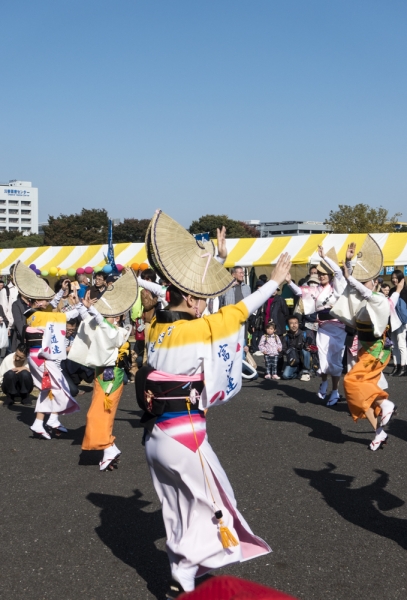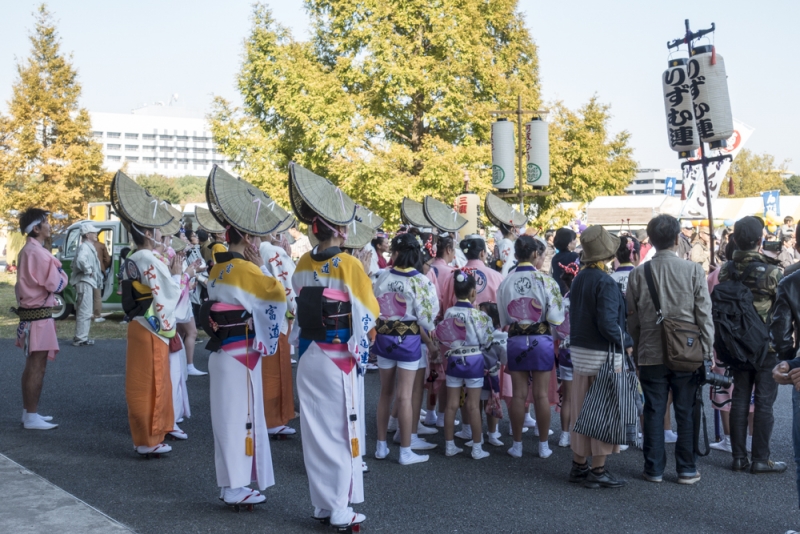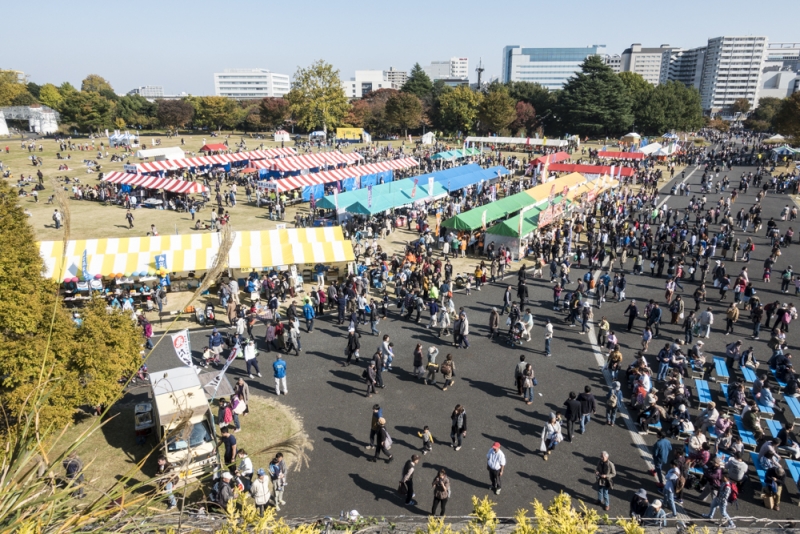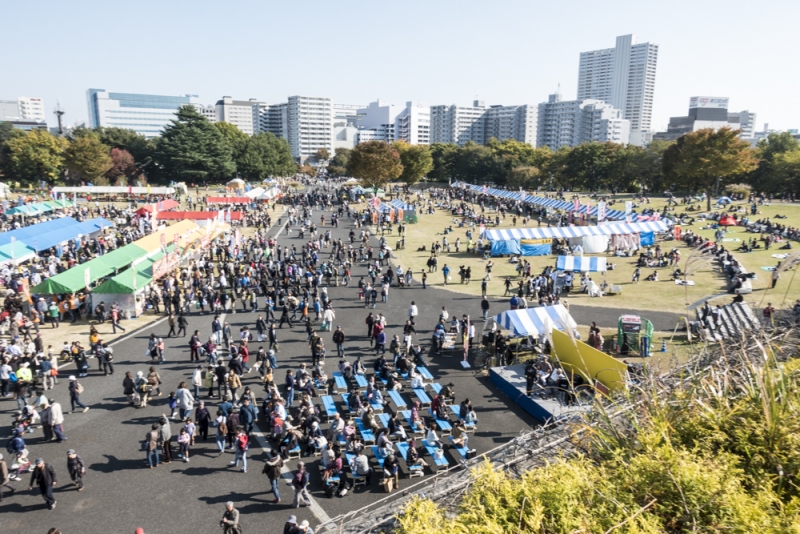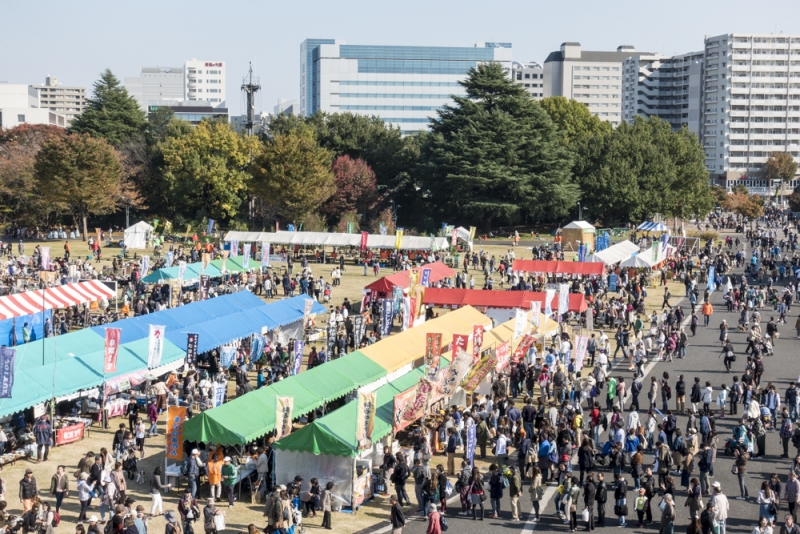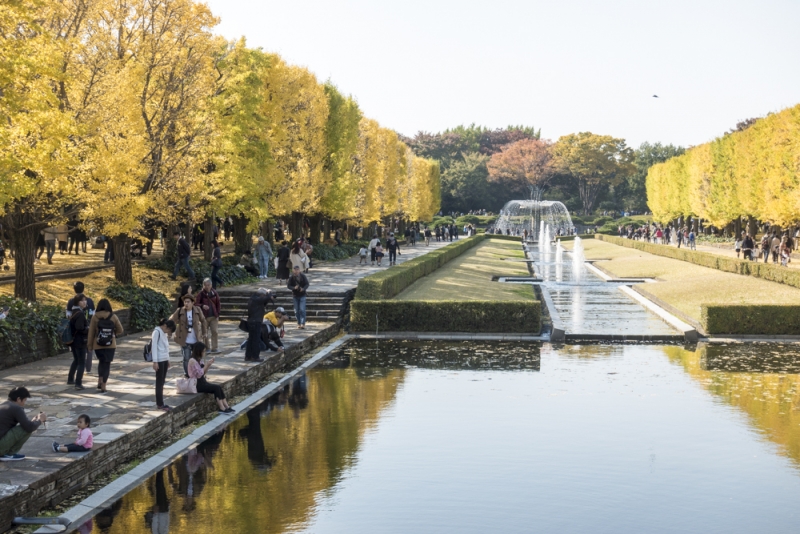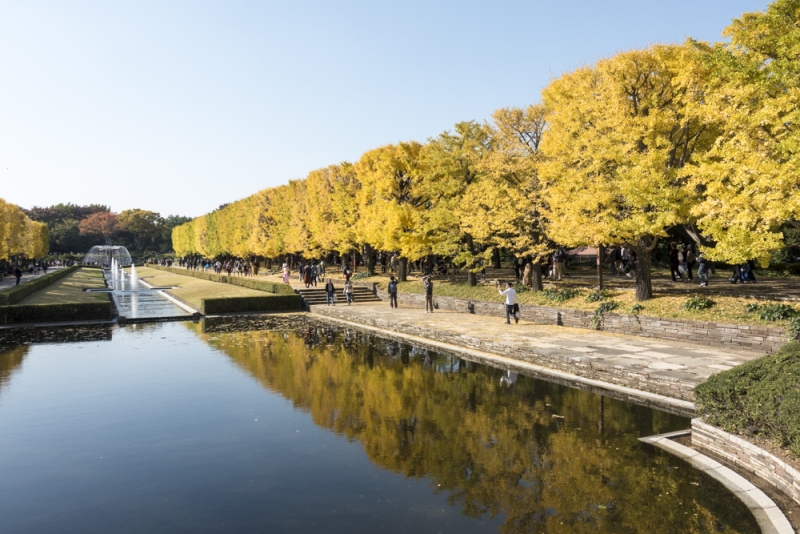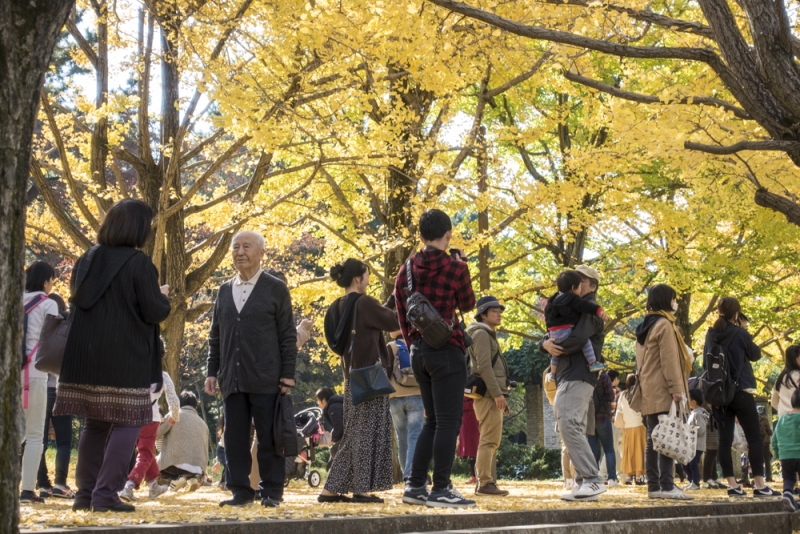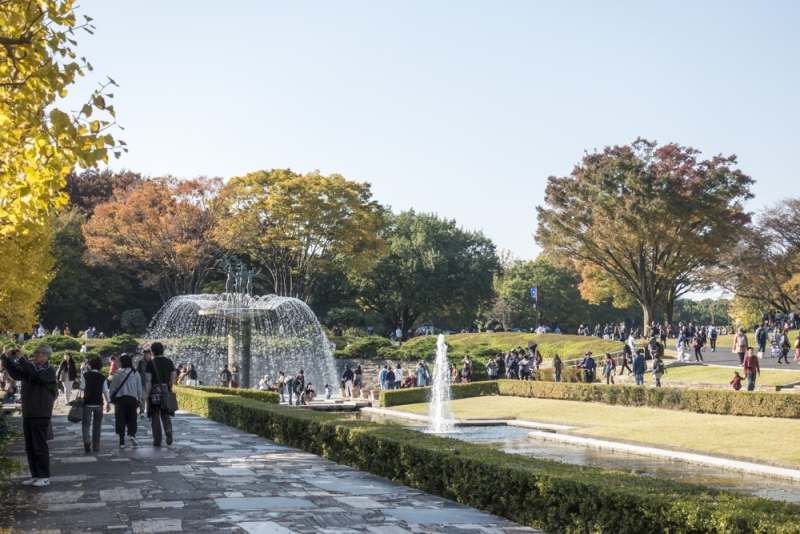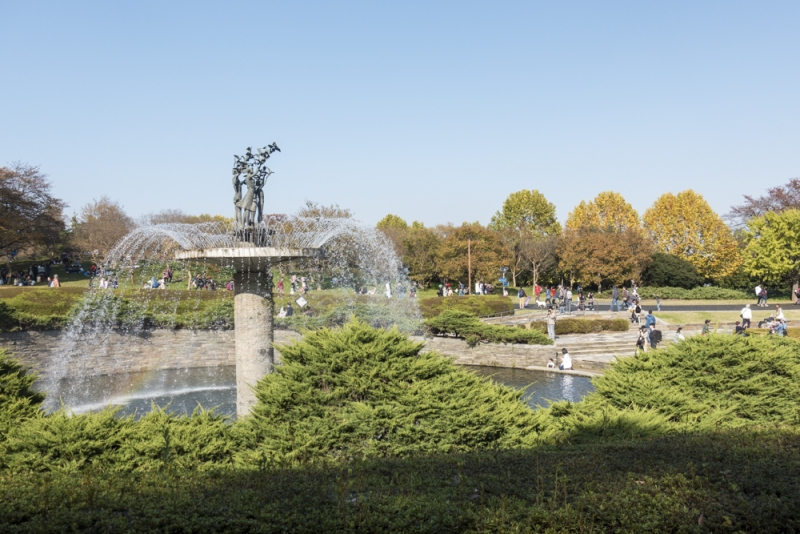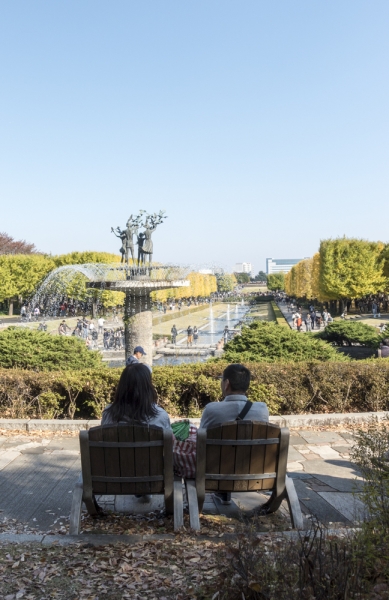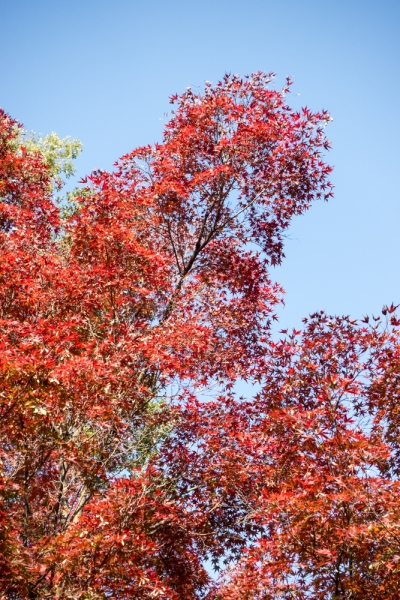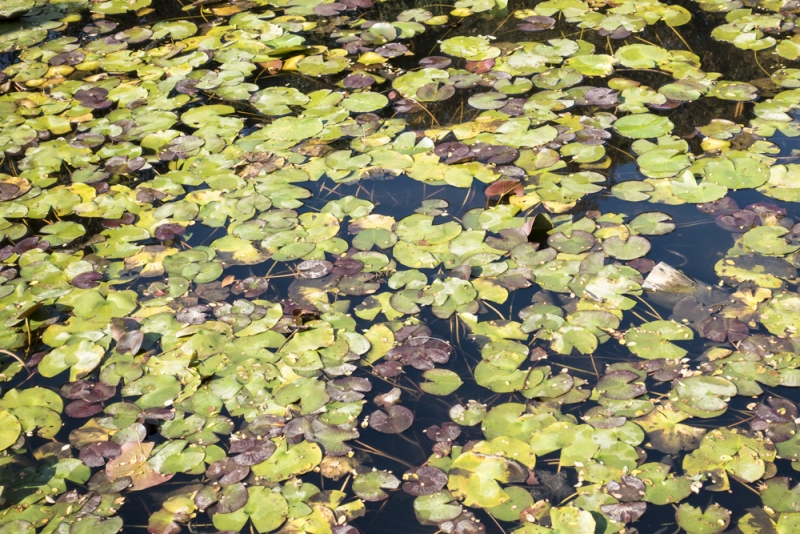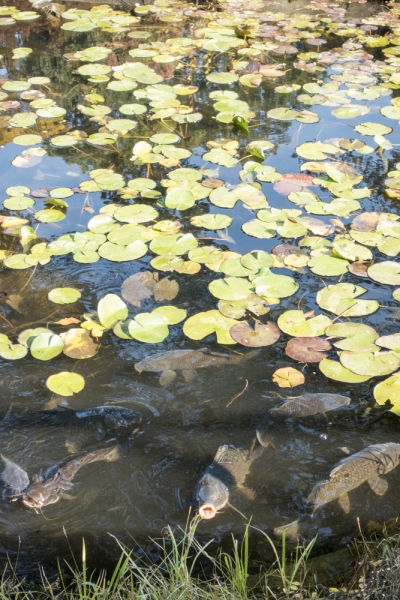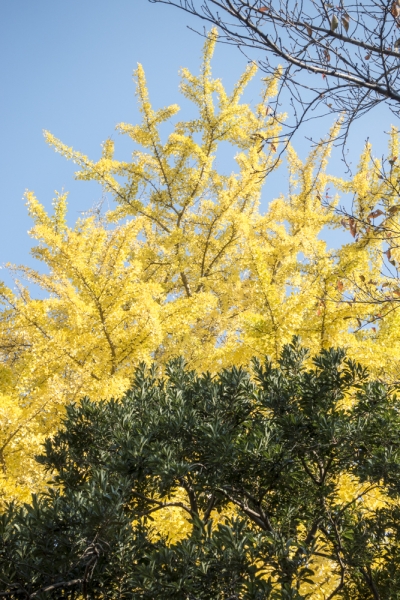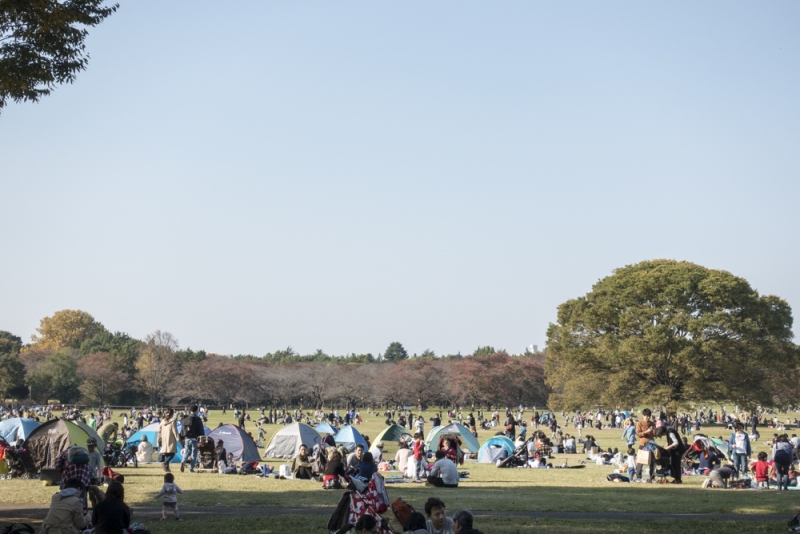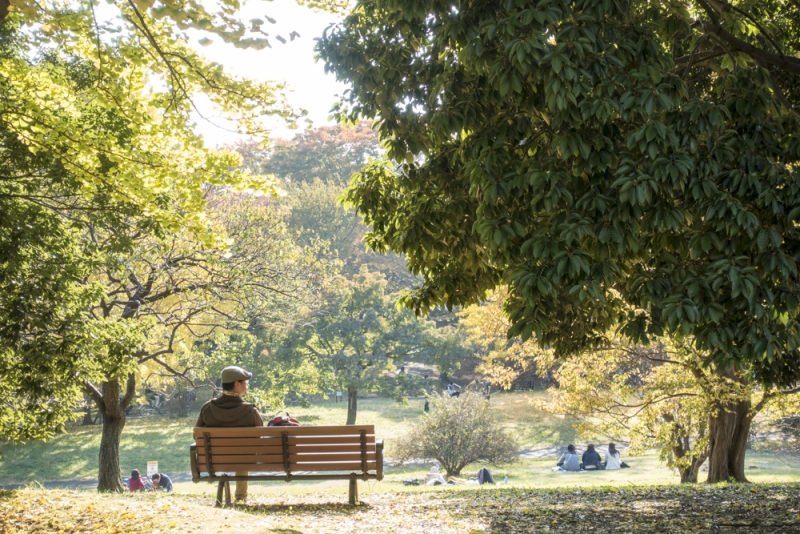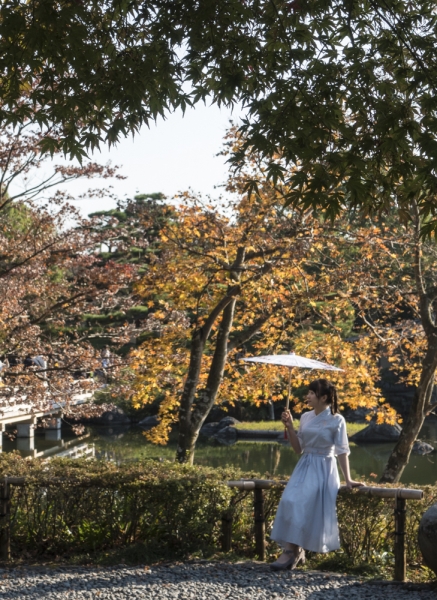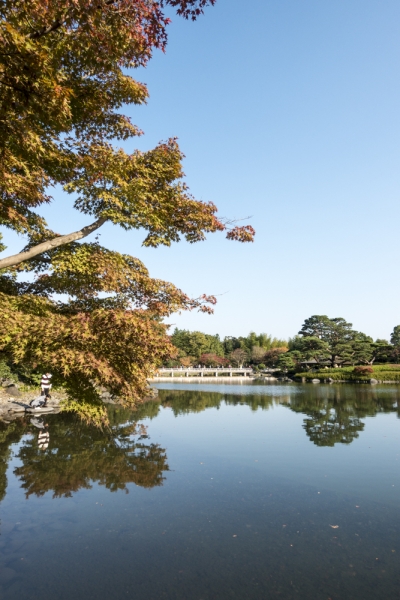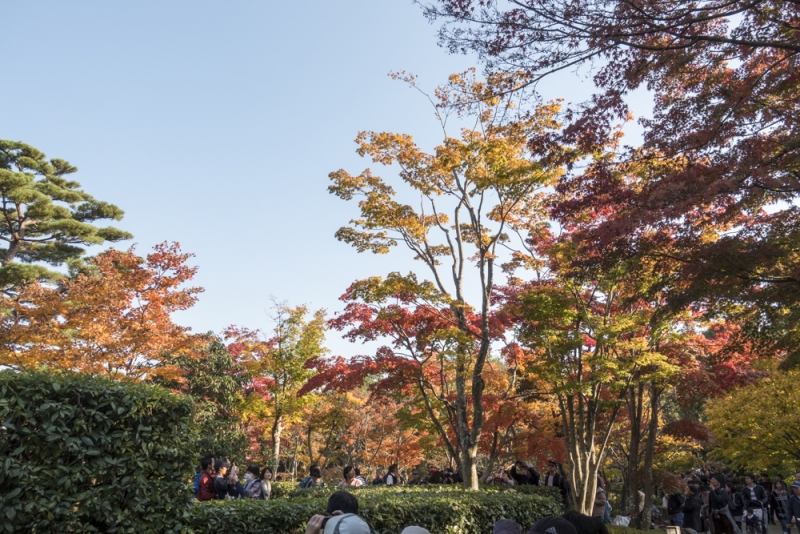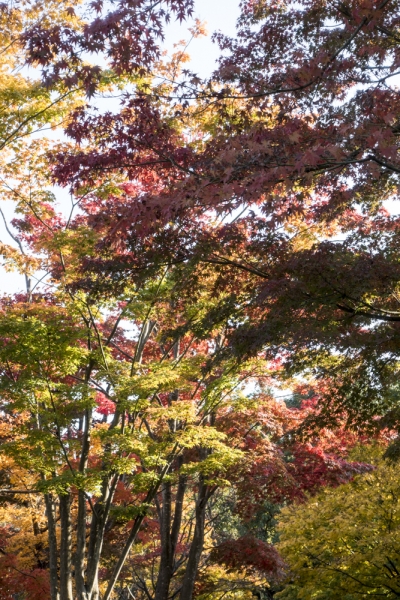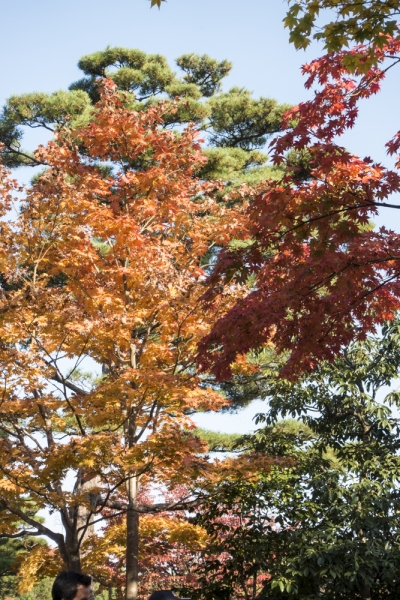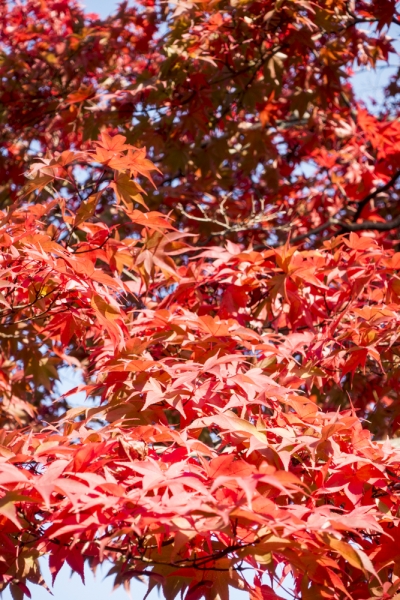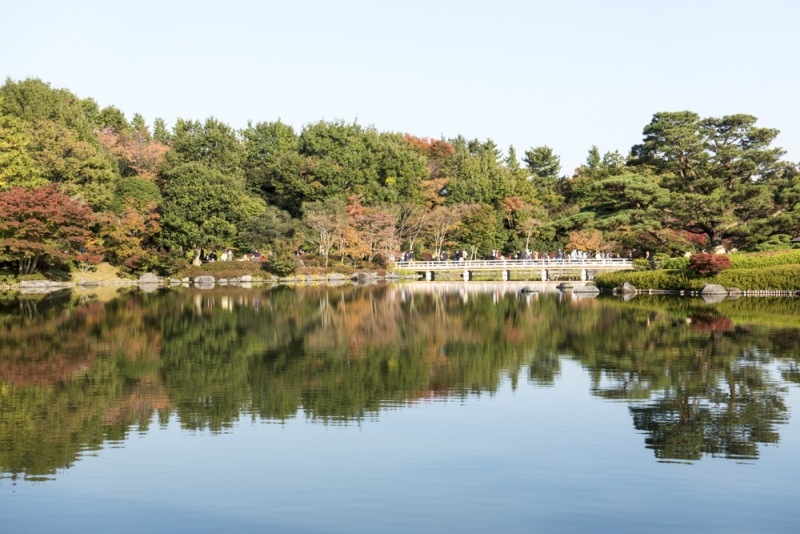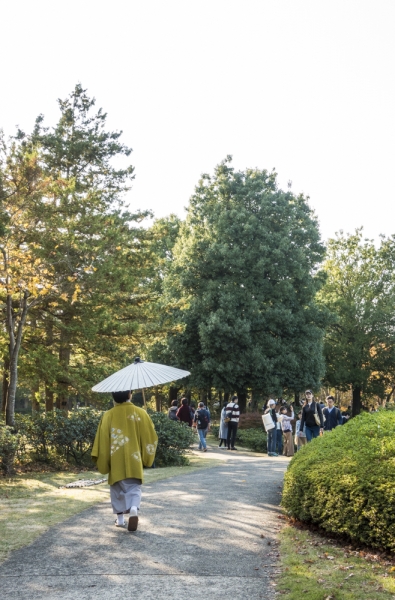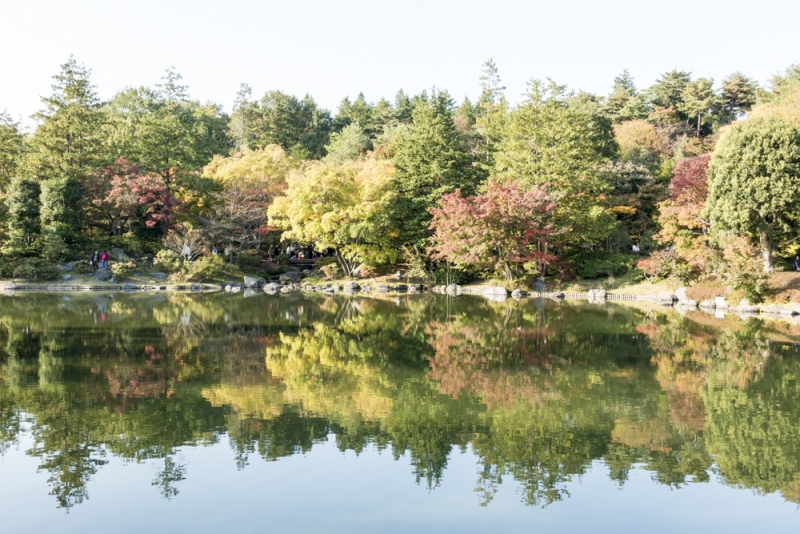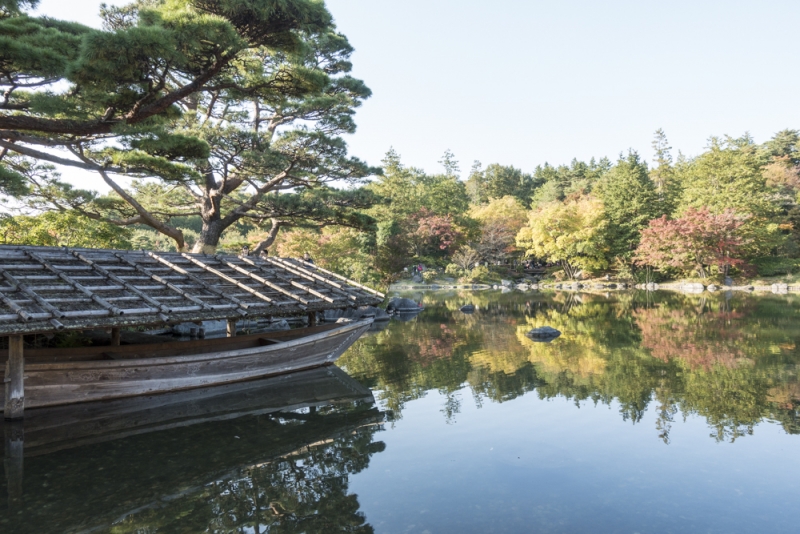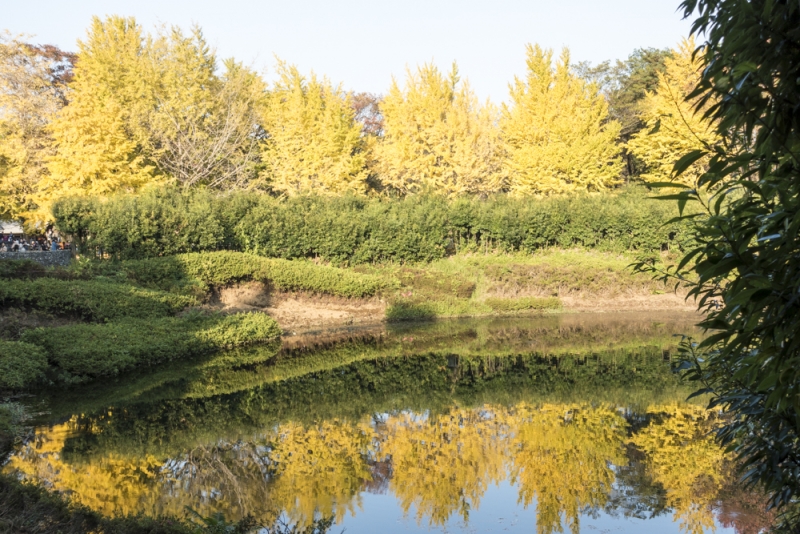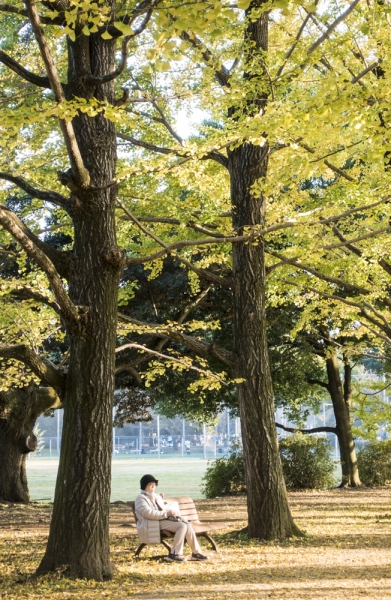It’s a clear autumn day in Tokyo, with a weather forecast of 16 degrees, which bodes well for a trip to Showa Memorial Park. Mt Fuji is visible in the distance and appears to have no snow cover at this stage.
A quick breakfast at the bakery at Atre, and another coffee at Blue Bottle Coffee, which has a long queue on opening at 10 am – usually a sign of great coffee, which it is. A single origin cappuccino that is worthy of the best cafes in Melbourne. Back at Easter, I took a bus tour to get to Showa Memorial Park to see the cherry blossoms. It was a tedious nearly 2 hour one-way trip on the bus, to spend 90 minutes at the park spanning 160 hectares – it is huge! It’s possible to get to Showa Kinen Park by train in under an hour, in my case from Shinagawa to Shinjuku, then Shinjuku to Tachikawa, with a bit of walking. Google makes it easy with directions and timing. The only issue is Shinjuku Station is massive, the busiest train station in Japan, with 36 train services. Get lost in here and it can take a LONG time to find the right platform. There is also a colossal number of shops of all varieties. At least if you do get lost in here, you won’t go hungry! It’s still sunny in Tachikawa, so I pull out my sunglasses only to narrowly miss stabbing myself in the eye. One of the arms has snapped off at the weak point halfway down the arm. So, sunglass shopping then, to no avail. The Japanese aren’t big sunglass wearers, and none of the department stores at the train station or nearby sell sunglasses. Tachikawa turns out to be a lovely, walkable city though, with elevated walkways leading from the train station, and many department stores, including an Isetan and a Takashimaya.Google thinks it’s a 14-minute walk from the station to Showa Memorial Park, but the Akebono entrance of the park is an easy 10-minute walk from the station, with a huge market and cultural festival underway in the Field of Dreams in front of the Emperor Showa Memorial Museum.
It’s a perfect autumn day, and I’m prepared to go out on a limb and say that there are at least as many people at Showa Memorial Park as there were at the rugby yesterday. That means about 40,000 people wandering around the park. There are many families with children making use of the huge children’s’ playgrounds, and thousands of people walking the paths, posing for photos, or taking them.
Everyone is at Showa Memorial park for the changing of the leaves, which doesn’t disappoint. Even the huge carp in the lakes are enjoying the sunny conditions, along with the occasional model posing for photos. The traditional Japanese Garden is full of people, with the majority of the maples in this area. There is a serious amount of camera gear being toted around – the safety of Japan means that people have no concern wandering around with thousands of dollars worth of gear anywhere at any hour. In this park, all of the gear is pointed at the changing leaves. An avenue of Ginko trees is also a popular spot, with children playing in the fallen leaves, and locals resting on the benches lining the route. By 4 pm, I’ve been walking for 3.5 hours around Showa Memorial Park without a break, and the park closes at 4 pm, so it’s time to head for the gate I came in. I’ve covered 14km and seen maybe 8 obvious Westerners all day. This is also apparently of interest to the park managers as I’m stopped for a survey as I’m leaving. The woman asking me to complete the survey is so polite and amazed that I’ve walked rather than hired a bike that I feel obliged to complete the survey. The facilities in the park are as impressive as the park itself, so the only negative I can find for the survey is that some English language signage for the food vendors would be helpful!Tachikawa Station is a madhouse on the way back – many of the visitors to the park are trying to get on the train. The efficiency of the train network means that the immense crowd is transported away quickly, and I’m back at Shinagawa Station by 5:15 pm. All up, an excellent day!

